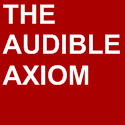“Who says a funk band can’t play rock?” Who says a funk band isn’t playing rock?
Let’s name all the major food groups of music… rock’n’roll, classical, hip-hop, R&B, jazz, electronic, folk, country, and, what the hell, polka.
Now how many of those genres have lineups that typically consist of at least drums, electric guitar, and electric bass, with possible variations on the rule? Only one, rock. In fact, drums, electric guitar, and electric bass are so much the foundation of rock that “post-rock,” which bears little resemblance to traditional rock in terms of structure, melody, or dynamics, is called post-rock simply because it often uses traditional rock instrumentation – guitar, bass, drums – to create sounds so untraditional that it’s supposedly already writing “traditional” rock’s eulogy.
But there’s another sound out there, largely extinct as a genre unto itself, yet can be found in traces across the spectrum of popular music. And, at least in its beginnings, in its true great moments of early fruition, its sound revolved around guitar, bass, and drums. You’ve read the title, so you know, of course, that I’m talking about the funk. A passing listen of that great funk masterpiece “Maggot Brain,” with guitar work by the legendary Eddie Hazel should seal the argument alone: that much of the funk of the early 1970s – Funkadelic and Sly & The Family Stone being the height of its achievements – is heavily rooted in that loud, white R&B ripoff, rock’n’roll. As great and innovative as Eddie Hazel is, much of his licks are borrowed from Hendrix, not from any of the Kings (B.B., Freddy, and Albert – for the record, Albert is my favorite). In a rare moment of truth, Hazel’s often considered to have invented “funk-metal.” True, much of funk is just as much rooted in horns as guitars, but funk revolutionized how horns were combined with guitars – or rather how guitars were combined with horns. Funk was the first – and, come to think of it, last – predominantly African-American music to put the guitar on display. Ultimately, funk shares just as much in common with rock as it does with R&B and soul.
So why so little recognition from the rock community? Unfortunately, the answer’s pretty obvious; I am convinced that if Funk originated as white guys being heavily influenced by the R&B of the time and put out nearly identical albums as those early 70s, rock-based funk (with slight vocal changes, of course), it would be called something like funk-rock. There would be no doubt that it would be heavily influenced by R&B, probably so much that people would debate if it belonged in rock or R&B. However, the rock side of the equation would be instantly heard and recognized. This is how genre categorization works – and ultimately the concept of a genre itself. As somebody (I forget who) said, this is why sometimes you often find Stevie Ray Vaughan in the blues section, but Eric Clapton in rock. (And I should note that this is all despite Sly & the Family Stone’s integration, heavily noted at the time.)
The thing about funk is that it’s rooted in rock – rooted, like rock is rooted in blues and country and, yes, plenty of R&B too. Funk uses rock as its foundation (which doesn’t necessarily mean it’s the most obvious material in the building, and yes I’m aware this metaphor has gone on long enough), then builds around it with R&B to create the ultimate product. For the first time, could it be that it wasn’t the white guy who borrowed another ethnicity’s music, then kneaded it to his liking? What only would have made this turn of musical events complete is if Funkadelic started covering songs by Cream or Blue Cheer – just like the Beatles and every other British invasion acted started covering Motown tunes. The fact that the Funk bands didn’t isn’t only because perhaps that isn’t a perfect comparison. The main reason is that a whole lot changed racially between 1963 – the year of “Please Please Me” - and 1970 – the year of Funkadelic’s eponymous debut album. One wonders if musical integration would have sped up or slowed, had Britain
Funk is just rock ‘n’ roll from a parallel universe.















0 comments:
Post a Comment